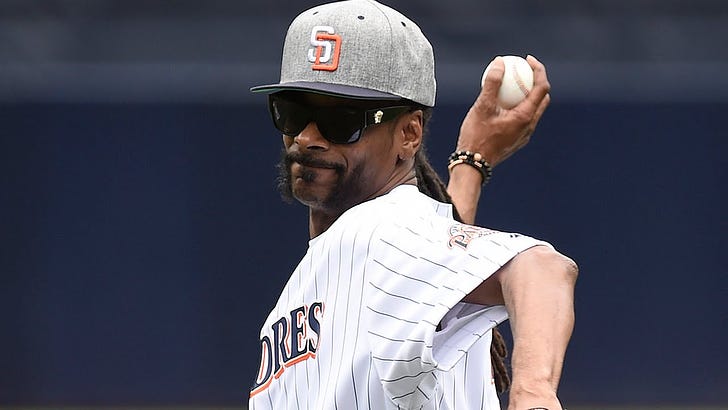Coming into this abbreviated MLB Draft - which was a travesty, by the way - teams had a unique chance to take the bonus structure and the mix of talent and do some weird things. Yes, they missed out on a lot of lottery tickets in the seventh, seventeenth, thirty-sevenths rounds, but that’s what they are - hope. In the first ten, certain the first five, a team needs to get the most talent it possibly can.
But there’s something else. They have to develop that talent and that is something that people seem to forget.
Teams have often had strengths and in player development, there are teams that can use that analysis to help themselves. The A’s found a lot of talent, yes, but also got it to the big leagues back in the “Moneyball” era — or as I think of it, “the time they had a bunch of good pitchers.”
The Padres may not have come into the 2020 Draft thinking they were going to load up on high-upside high school hitters and high velocity, big bodied pitchers, but my guess is they did. Justin Lange fell to them, as did Cole Wilcox in the fourth. Was their first pick, a bit of an overdraft, a deal to keep some money on the table for those guys? There’s some suggestion of that.
But from what we know about the Padres, as constructed, do we trust them to take this kind of talent and actually do something with it? Maybe.
There’s not a lot of prospects in their organization that profile like Lange, Wilcox, or the others. Certainly no one like Lange. The team was able to produce several pitchers, most notably Chris Paddack, over the past couple seasons, but he wasn’t a Padres “development” in the strictest sense.
Drafted by the Marlins and flat stolen from them in a deal for Fernando Rodney, he dominated from the time he set foot in the minors. Skipping Triple-A, Paddack came up and was babied smartly in 2019, setting himself up for a season where he could really become an ace, going over 180 innings in a perfect world.
Same with Cal Quantrill. Son of Paul, Quantrill came from Stanford and took a similar path, though not quite as fast and without the high level success. At 25 - a year older than Paddack - Quantrill isn’t going to be an ace, but he can be a very useful pitcher.
If you want a development case study, Adrian Morejon might be the one. Signed as a Cuban 18-year-old, a path that’s seen mixed results, Morejon took three seasons to get to the bigs and may have locked in at the back of the bullpen had we gotten through spring training.
Or, the Padres may have continued the experiment of using him as an opener, as they did in ‘19. Reports he was being “stretched out” this spring never really got solid backing beyond speculation. The lefty has upper 90’s stuff and while not durable so far, he hasn’t had major arm issues either. He was a Baseball America Top 100 prospect from the time he got to America and he’s done nothing to change that concept, creeping up the charts.
I could go on - Luis Patino is a top 20 BA prospect and hasn’t touched Triple-A - but there’s a theme here. The Padres move guys fast when they succeed, but there’s very little in the way of guys developing. No one jumps up. No one leaps up the charts. They just come in hot and more or less stay there as they bump through the levels.
Is any one of these an ace? Maybe. On looks, it might be a group of 2/3 starters and that’s not all bad. Aces are tough to come by and expensive. So are closers and bullpen heat, which is the downside for Morejon and Patino. Hardly failure, if not the best success.
So does this - and I don’t mean to make this sound exhaustive - mean anything for the hard throwing youngsters that just got drafted? Probably not. There’s a new coaching staff, but Larry Rothschild is unlikely to get too involved with lower level guys or modern plans. Logan White certainly has baseball development bonafides from his time with the Dodgers. Eric Junge and Steve Lyons (not “Psycho”) are very well thought of, but the Pads haven’t found a secret weapon or spent big on development staffs. All in all, certainly adequate, but not exactly a development machine that people around baseball are talking about, the way we see with the Reds, White Sox, or Twins.
That could all change if the Padres get the kind of potential out of these kids and into their pitching staff by … well, three years isn’t outrageous given what we’ve seen above, which is well within the window of Manny Machado’s peak and the start of Fernando Tatis’.
With no in-market competition for the sports dollars (no offense, San Diego State), the Padres have a big market, ownership that’s been willing to spend money on top talent, and good pieces in place. That’s the kind of team that can piece together moves - one more bat, one more gunslinging pitcher at the deadline - and put themselves in a very good position not just for a high-peak run, but for a sustained hold on a division that has been all Dodgers for a decade.
If I can suggest one more move to A.J. Preller now? You need a sports science staff that matches up with the rest of the talent and can work with what’s in place.




